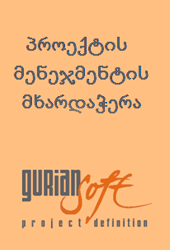Osethians in Georgia
 Georgian sources often refer to the Alans, who lived at the northern fringes of the Caucasus, by the name Osi or Ovsi. Frequent reference to them is explained by the fact that the political life of the Georgian state was closely related to the Alans from the beginnings. This large tribal group, which belongs to the northern branch of the Iranian peoples, gained significance in the region between Lake Aral and the Caucasus after 50 A. D. Following the thrust of the Huns into Europe, some of their tribes advanced westward, others remains near the Caucasus. So, the Ossetes are descendants of the ancient Alan tribes of Iranian stock. Some of them are Orthodox Christians and some (in certain regions of North Ossethi) are Moslems.
Georgian sources often refer to the Alans, who lived at the northern fringes of the Caucasus, by the name Osi or Ovsi. Frequent reference to them is explained by the fact that the political life of the Georgian state was closely related to the Alans from the beginnings. This large tribal group, which belongs to the northern branch of the Iranian peoples, gained significance in the region between Lake Aral and the Caucasus after 50 A. D. Following the thrust of the Huns into Europe, some of their tribes advanced westward, others remains near the Caucasus. So, the Ossetes are descendants of the ancient Alan tribes of Iranian stock. Some of them are Orthodox Christians and some (in certain regions of North Ossethi) are Moslems.
As far back as the second half of the 13th century the Alan-Osethians had tried to settle in Georgia by force, but the Georgian king George V defeated them in time and drove out from the country.
From the beginning of the 17th century the Georgian nobles were interested in obtaining the Osethi slaves from the north Caucasus, and at that times they (Osethians) had legally started to migrate to the mountainous parts of the northern Georgia. Later, the Georgian principalities of Aragvi, Qsani, Racha and some territories of Samachablo and Satserethlo were partly covered with the Osethi residents.
So, by the end of the 18th century a size of the Osethi population attained quite nears the 5,000 families. Thus was formed on the oldest Georgian fields so-called the south Osethians ethnic massif, which is known in the Georgian sources by the name "the insider Osethians" or "the Osethians of Aragvi, Qsani, Liakhvi and Samachablo".
The Georgians has never accepted the term "South Ossethi" as it seems to prompt demands for reunification with North Ossethi, which is a part of the Russian Federation. The term "South Ossethi" was used in the 19th century in a cultural/geographical sense, but the area was granted administrative status only under communist rule. Although the rural population of the region has been predominantly Ossethians for the past few centuries, the Georgians consider the region a Georgian historical province, called Shida Qartli (Inner Qartli) or Samachablo, (Land of the Machabeli, from the name of the Georgian feudal family which allegedly ruled it), the Tskhinvali region.

The s. c. South Ossethi became a part of the Georgian Menshevik Republic with the break up of the Russian empire in 1918, while the North formed a part of the Terek Soviet Republic. The south Ossethi Oblast was organized within the Georgian republic on April 20,1922.
Regarding the problems of population. There were an estimated 29,300 Osethians in Georgia in 1800 and in 1832 there were living about 32,300. According to the census of 1886 Osethi population in Georgia was 71,000 and the census of 1897 shows 81,500.
The size of the Osethi population in Georgia gradually had increased from the beginning of the 20th century. According to the list of 1926 census in the country were living 113, 298 Osethians. The growth tendency of the Osethians in Georgia was also observed in 30-40-60-70-80s of the last century. In 1939 they were 148,680; in 1959 - 141,200; in 1970 - 150,200; in 1979 - 160,500; in 1989 - 164,100.
In 1989, in the freedom of "Perestroika" and frightened by rising Georgian nationalism, the South Ossethians demanded unification with North Ossethi. In December the next year, the Georgian Parliament declared that South Ossethi was no longer autonomous and authorized suppression of newspapers and bans on demonstrations. More than 100.000 Ossetians fled from Georgia and South Ossethi to North Ossethi. The fighting ended in July 1992 when a cease-fire was agreed and a peacekeeping force of Ossethi, Georgians and Russians was set up.
According to the latest census conducted in Georgia in 2002 the size of Osethian population is 38,028 and about 10,268 of them resides in Tbilisi.
Sources:
- Z. Vaneev, Historic tidings about the Alan-Os, Stalinir 1941, pp. 45-69;
- V. Ithonishvili, History of the Georgian-Osethian relations, Tbilisi 1995, p.13-14;
- V. Jaoshvili, Georgia`s population, Tbilisi 1996, pp.282-302;
- Principal results of census of the Georgian population, Tbilisi 2002, vs. I - II.
Osethians






